4 Apr 2025
We caught up with Jay Wang, Lecturer and Program Leader of Master of Engineering at Auckland University of Technology (AUT). Hear about his role, some of his career highlights and learn how he's planning to integrate AI into his courses.
Tell us about your role at AUT?
I joined AUT in February this year, following my role as a postdoctoral researcher at the University of Southern Denmark since June 2023. Previously, I was also a teaching and research staff based at the University of Adelaide, Australia. At AUT, I work as a lecturer specializing in thermodynamics and also oversee the Master of Engineering program as a program leader. My teaching role involves designing and delivering courses in thermo-physical engineering incorporating diverse teaching methods and supervising students’ projects, and my research has been dedicated to enhancing energy efficiency and promoting environmental sustainability in industrial and commercial sectors.

Jay in Denmark
Who or what got you interested in the wonderful world of engineering?
I would like to express my sincere gratitude to my former supervisor, Professor Eric Hu from the University of Adelaide, who first introduced me to the field of thermodynamics. I still remember my early days as a master's student, working on my final year project under his guidance. My research focused on an absorption refrigeration system using lithium bromide as the working substance in a highrise building. The system itself was massive, occupying an entire basement floor. This was my first real experience working with heating and cooling systems within the thermodynamics field, and it sparked my interest in this area. Following that, I became involved in an Australian Research Council (ARC) project, where I contributed to the study of solar-thermal adsorption refrigeration systems. From the very beginning of my academic journey, Professor Eric Hu has been an invaluable mentor, and to this day, he continues to offer me guidance at critical moments in my career.
Tell us about your area of expertise
My research expertise lies in the development and analysis of energy conversion systems, including eco-friendly refrigeration and heat pump systems, solar thermal cooling, thermal energy storages, and power-to-x technologies.
What are three of your career highlights?
The first major milestone was officially receiving my PhD parchment after three years of dedication and hard work. The second highlight was arriving in Denmark to begin my postdoctoral career at the University of Southern Denmark. It was an exciting experience, as it marked my first time in Europe and the beginning of my academic journey there. The third significant moment was receiving a permanent lecturer position at AUT in Thermodynamics. This opportunity allows me to fully immerse myself in the research and teaching for the long term.
How are you integrating AI into your courses and what piece of advice do you give students when they use AI?
To begin, I’d like to recall an old saying: every coin has two sides. AI has transformed our lives, making things more convenient, but it has also introduced certain uncertainties, much like Pandora’s box. In my thermodynamics courses, I plan to incorporate AI-based tools, such as MATLAB AI, to create interactive simulations that help students visualize key concepts like entropy, energy transfer, and phase changes. I believe it’s beneficial for students to use AI to expand their perspectives and explore new possibilities. However, they should never become overly dependent on it or develop an addiction to its use. That being said, this is just my personal perspective, i.e.: each individual has a unique way of thinking – something that AI can never truly replace.
If a student is having trouble solving a problem, what advice would you give them?
First and foremost, it is important to identify the key issue behind a problem. Typically, this could be due to a misunderstood concept, an incorrect methodology, or a minor missing detail that causes everything to become stuck. Once the core issue is identified, I can provide appropriate suggestions or outline a clear approach to resolving it. If the problem persists without improvement, I will seek advice and solutions from my academic or industry network. Ultimately, my role is to assist my students in solving problems and guiding them in the right direction.
Why are you a member of Engineering New Zealand?
First of all, I aim to integrate myself into the New Zealand engineering community by building connections with academics and professionals in my field, with the ultimate goal of fostering collaboration. Additionally, as a member of Engineering New Zealand, I have the opportunity to attend various events, allowing me to stay informed about industry trends and developments within New Zealand.
If you could meet any engineer in the world, who would it be and why?
I would love to meet Professor Petter Neksa, a pioneer in eco-friendly refrigeration and heat pumps. His research has been both educational and inspiring for me throughout my PhD and even now. One of the reasons I chose to go to Northern Europe was partly because of him, as he is based at Norwegian University of Science and Technology. However, I have yet to meet him in person, despite being connected on LinkedIn. I hope to have the opportunity to collaborate with him on a research project in the future when the right opportunity arises. What is your favourite piece of engineering in Auckland, New Zealand? I am particularly fascinated by New Zealand’s rich geothermal energy resources and the vast potential they offer. I am eager to explore new research opportunities related to this unique energy source, as conducting experiments here allows for direct access to natural geothermal conditions. The capability to work with geothermal resources in real life is a great opportunity to come up with, which will in turn make research more pragmatic and effective. I am keen on being involved in the activities that contribute to the development of green energy in this sector.




